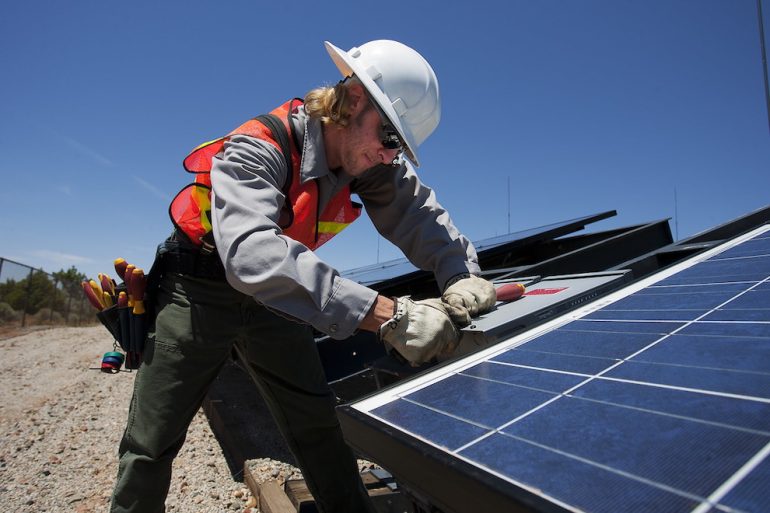Solar energy is one of the most promising renewable energy sources available today, but many people still wonder: How exactly is sunlight turned into usable electricity? The process may seem complex, but it’s based on simple science and smart technology. Here’s a step-by-step look at how solar energy is converted into electricity—and how it powers everything from lights and appliances to entire homes and businesses.
1. It All Starts with the Sun
Solar energy begins with sunlight — an abundant and renewable energy source. The sun emits photons, which are tiny packets of energy. When these photons hit a solar panel, they initiate the process of converting solar energy into electrical power.
2. Photovoltaic Cells Do the Heavy Lifting
The core of this energy conversion happens in photovoltaic (PV) cells, which are the building blocks of solar panels. Most PV cells are made of semiconductor materials like silicon. When sunlight strikes the surface of the PV cell, the energy from the photons knocks electrons loose from the atoms in the semiconductor.
This movement of electrons creates a flow of electric current—specifically, direct current (DC) electricity. This is the first step in turning sunlight into usable electrical power.
3. Solar Panels Generate Direct Current (DC) Electricity
The solar panels themselves are collections of PV cells wired together in a protective frame. As sunlight hits each panel, the PV cells generate DC electricity. However, the appliances and electrical systems in homes and businesses don’t use DC power — they run on alternating current (AC) electricity.
4. The Inverter Converts DC to AC Power
To make the electricity from solar panels usable, it must be converted from DC to AC. This is the job of the inverter, a key component of any solar energy system. Modern systems typically use either a string inverter (for a whole array) or microinverters (mounted on each panel).
The inverter takes the DC electricity and converts it into 120-volt or 240-volt AC electricity, which can be used by your lights, refrigerator, TV, and other household systems.
Get Your Energy Independence
5. Electricity Is Distributed or Stored
Once converted, the AC electricity flows through your home’s electrical panel and into your outlets and devices—just like power from the utility grid. If your system produces more electricity than you use, the excess can:
- Be exported back to the grid (if you’re connected), often earning you credits through net metering.
- Be stored in batteries for later use, especially at night or during power outages.
Monitoring and Efficiency
Modern solar systems also include monitoring software, which lets you track your system’s performance in real time. You can see how much energy you’re producing and using, and identify any issues quickly.
Efficiency depends on several factors, including panel orientation, shading, system size, and local weather. But even on cloudy days, panels can still generate electricity—just at a lower rate.
In Summary
Solar energy is converted into electricity through a straightforward but powerful process:
- Sunlight hits photovoltaic cells in solar panels.
- PV cells convert sunlight into direct current (DC) electricity.
- An inverter changes DC to alternating current (AC) electricity.
- AC power runs your home or is stored or sent back to the grid.
It’s a clean, efficient, and increasingly affordable way to power your life using the energy of the sun. Interested in learning if solar is right for your home or business? We can help you explore your options and design a system that fits your needs.

